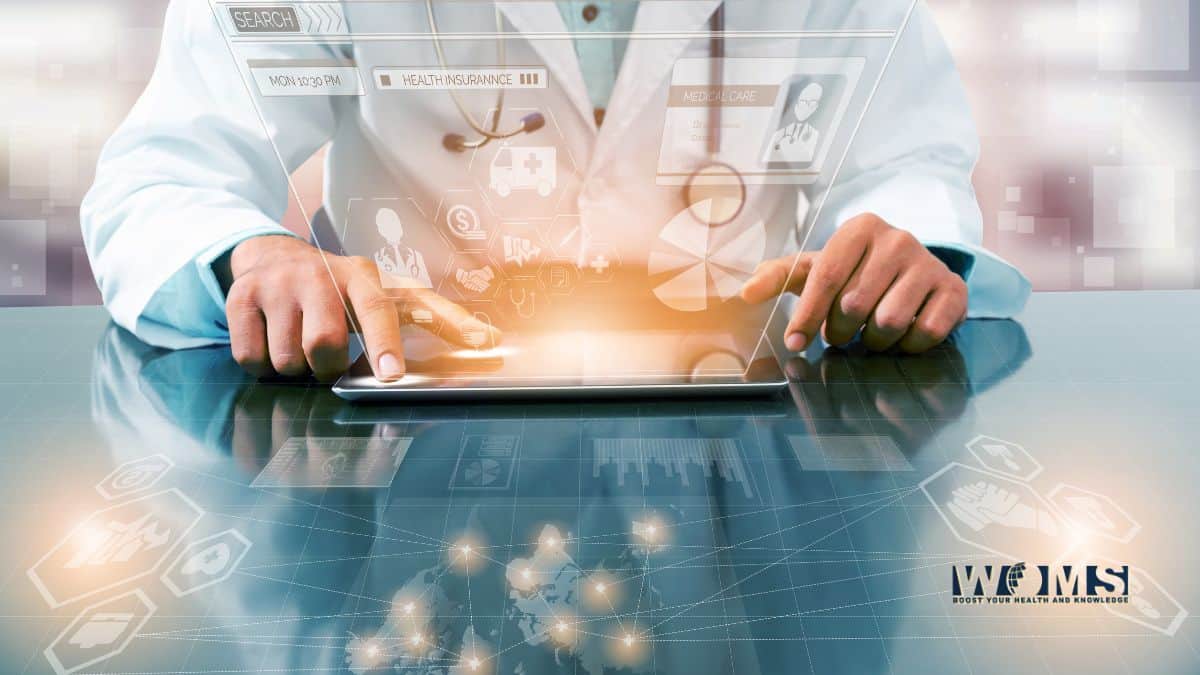5 Revolutionary Medical Innovations in 2023

There’s a reason human life expectancy keeps getting longer and longer. Every time someone needs surgery or treatment for an illness, today’s medical innovations dramatically increase their chances of survival and full recovery. Many treatments (like the groundbreaking CRISPR-Cas9 gene editing technique) weren’t even possible 20 years ago.
From medical software to augmented reality, the future of medicine is bright and full of promise. In today’s article, we’ll take a look at five innovative medical technologies revolutionizing global healthcare as we know it today.
1. Artificial Intelligence (AI)
Algorithms and machine learning technologies are transforming the landscape of healthcare, emerging as pivotal tools in the identification, analysis, and management of various medical conditions. This advancement is often heralded as the most transformative healthcare breakthrough of our era.
AI can identify illness patterns earlier and analyze medical data more accurately and quickly than traditional methods. For example, in breast cancer, AI systems have been developed to analyze mammography images much faster than humans, with near-perfect accuracy rates. This advance significantly cuts down the necessity for invasive diagnostic procedures like biopsies.
In another instance, the health-technology enterprise Qure.ai has innovated a deep-learning model that is enhancing the early recognition of lung cancer. According to research and company-published reports, using their AI to analyze chest X-rays is around 17% more accurate than standard radiological assessments. This has resulted in a collaboration with pharmaceutical leader AstraZeneca to expand the reach of this technology, aiming to reduce global lung cancer mortality.
2. Gene Editing
The advent of CRISPR-Cas9, or more commonly, CRISPR, stands as one of the most exciting and controversial advancements in modern biotechnology. This technique, likened to molecular scissors, allows scientists to edit genes with unprecedented precision, efficiency, and flexibility. Beyond treating diseases, its applications range from agriculture, where it promises to create more resilient crops, to environmental science, where it could help eradicate invasive species or revive endangered ones.
The CRISPR gene-editing tool is poised to revolutionize the approach to medical treatment, with the potential to deliver groundbreaking progress in the battle against formidable illnesses such as cancer and HIV within a few years.
This method operates by co-opting the inherent defense mechanisms of viral intruders to excise compromised segments of DNA. By modifying cellular anomalies, CRISPR could drastically change the management of hereditary ailments like cystic fibrosis and sickle cell anemia.
Nonetheless, the moral implications of its application are under scrutiny, particularly concerning its capability to modify the genetic makeup of offspring. Notably, in 2020, a group of researchers in China faced legal action after announcing they had produced the first genetically edited infants with this technique.
3. Virtual Reality (VR)
Normally, we think about gaming when we think of VR. The headgear and hand-held controllers may have originated as fun toys, but now their applications are crossing over into the medical world. The global VR marketplace is expected to grow at a CAGR of 27.5% per year from 2023 to 2030, partially thanks to the booming demand for VR-based surgical simulators.
In the medical world, VR tools are used in a range of applications, including enhancing surgical procedures, managing pain, and providing therapy for mental health issues. Surgeons and medical students now employ VR headsets for procedure simulation, offering them a comprehensive view of a patient’s internal anatomy.
VR can also be used to reprogram the brain’s perception of chronic pain, effectively helping individuals to diminish long standing discomfort. It also serves as a therapeutic tool for those with mental health conditions, allowing them to confront and work through their phobias within a safe and manageable setting.
4. 3D Printing
The healthcare industry’s adoption of 3D printing is one that will bring down costs and provide customized medical solutions for patients in entirely new ways. It’s also on a dramatic incline. The American Hospital Association reports that 110 American hospitals are currently equipped with onsite 3D printing facilities, a stark increase from a mere three in 2010.
A significant advantage of 3D printing in healthcare is its capacity to accelerate the manufacturing timeline, thus reducing the costs associated with conventional production methods. As noted by the American Hospital Association, the time required to manufacture hearing aids has been drastically cut from several days to a single day, exemplifying the efficiency of 3D printing.
The implications of 3D printing in medicine extend well beyond the manufacturing speed and cost-effectiveness; they represent a paradigm shift in personalized patient care. Custom-tailored implants and prosthetics, crafted to match the unique anatomical structures of individual patients, not only ensure a better fit and functionality but also potentially improve recovery times and reduce the likelihood of complications.
Bioprinting, a specialized area of 3D printing, is at the forefront of tissue engineering, where researchers are working towards printing live tissues and organs for transplant, a development that could address the critical shortage of organ donors. The ability to print medications in unique dosages and release profiles also presents a future where treatments can be customized to the metabolic profile of the patient, marking a significant step towards truly personalized medicine.
The intersection of 3D printing with digital imaging and diagnostic tools further amplifies its potential, enabling clinicians to visualize and prepare for complex procedures with models that replicate the patient’s internal pathology in fine detail. As 3D printing technology continues to evolve, its integration into the medical field promises to enhance the landscape of healthcare innovation.
5. Smart Devices and Wearables
Smart devices have become ubiquitous in our daily lives, from smartphones to fitness trackers. However, their potential goes beyond making calls and counting steps. In the medical field, smart devices and wearables continuously monitor patient health while providing valuable data for tracking and predicting potential health issues.
Smart bandages are one of the best examples of this technology. These small band-aid-like devices are embedded with sensors that can detect changes in the wound environment, such as temperature and pH levels, and transmit this data to a healthcare provider.
With this information, medical professionals can monitor healing progress remotely, reducing the need for frequent in-person check-ups. In the case of complications, fast intervention improves patient outcomes.
Smart inhalers are another game-changing device for individuals living with respiratory illnesses like asthma and COPD. These devices track medication usage, dosage, and inhaler technique, sending this data to healthcare providers who can adjust treatment plans as needed. This technology not only improves patient compliance, but also provides valuable insights for managing chronic conditions.
Final Thoughts
Advancements in medical software and hardware are changing the world as we know it. By bringing down healthcare costs, increasing global access to care, maximizing efficiency, and improving patient outcomes, these innovations have the potential to revolutionize the healthcare industry. As we continue to push the boundaries of what is possible with technology, we can look forward to a healthier and more connected future for all.




